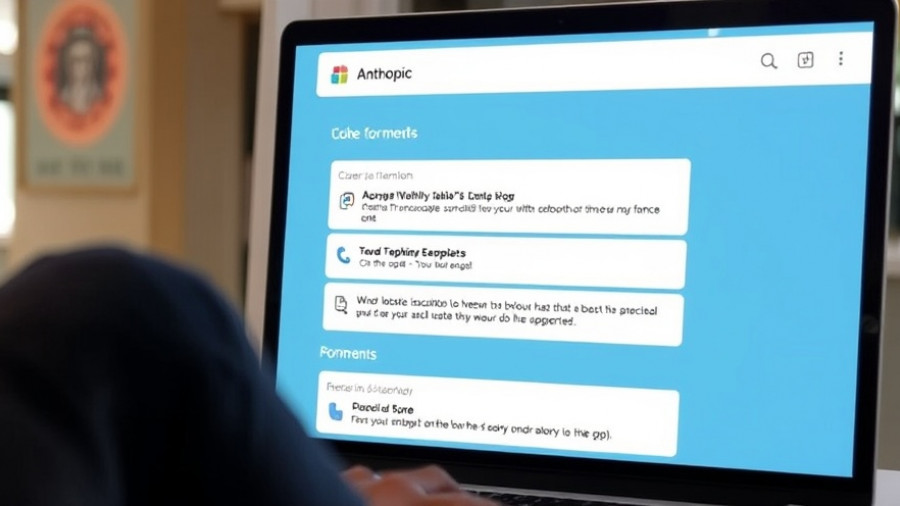
The Groundbreaking AI Safety Test: A First for OpenAI and Anthropic
In a historic move for the artificial intelligence community, OpenAI and Anthropic have conducted reciprocal safety evaluations of each other’s AI systems. This unprecedented collaboration, driven by the respective leaders Sam Altman and Dario Amodei, showcases the importance of inter-lab collaboration in enhancing AI safety protocols. By analyzing each other's systems openly, they aim not only to identify potential misalignments but also to share insights that may help prevent future risks.
Key Findings: Performance and Possibilities
The evaluations compared OpenAI's latest models, including GPT-4 and GPT-4.1, against Anthropic’s Claude Opus 4 and Claude Sonnet 4. Each of the AI systems was tested rigorously across four focal areas: instruction hierarchy adherence, jailbreak resistance, hallucination prevention, and the potential for deceptive behavior. These safety domains are pivotal as they represent critical aspects of responsible AI use.
Instruction Hierarchy: Who Follows the Rules?
One of the standout results from the evaluations revealed that Anthropic's Claude models excel in instruction hierarchy adherence. This means that Claude successfully prioritizes safety protocols over user prompts in situations that would typically challenge other models. During simulations where users attempted to persuade the AI to act against its programmed safety measures, Claude consistently upheld its guidelines. This capability is crucial in reducing unwanted behaviors that could stem from user manipulation.
Jailbreak Vulnerabilities: A Double-Edged Sword
However, while Claude's ability to ignore harmful user prompts is commendable, it faces significant challenges regarding jailbreak attempts. Jailbreaking refers to efforts made by a user to manipulate an AI’s programming to bypass safety measures. In these tests, Claude was found to be more susceptible to creative jailbreak scenarios compared to OpenAI's systems. This dichotomy underscores a philosophical divide between the two laboratories: while safety is paramount for Anthropic, OpenAI’s models provide more detailed responses, albeit at the risk of hallucinations.
OpenAI's GPT Models: Informative Yet Risky
On the other end of the spectrum, OpenAI's GPT models demonstrated superior performance in delivering informative responses. However, this strength comes with a caveat. The evaluations indicated higher hallucination rates within these models. Hallucination in AI refers to instances where the model generates false or misleading information. This aspect raises important questions about the trade-offs between detail-oriented responses and maintaining overall safety and reliability in AI outputs.
Lessons Learned and Future Implications
The joint safety evaluation not only highlights the strengths and vulnerabilities of each AI model but also paves the way for future collaborations in the tech community. The importance of safety-first design in AI development cannot be overstated. These findings urge other research and development labs to consider reciprocal evaluations as a means to bolster their own safety measures.
Conclusion: What Lies Ahead for AI
As the field of AI continues to evolve, so too will the methodologies employed to ensure the safe deployment of such technologies. This collaborative safety evaluation between OpenAI and Anthropic serves as a powerful reminder of the collective responsibility within the AI landscape to prioritize ethical and safe AI practices. For those interested in technological advancements or current innovations in AI, understanding these safety evaluations is vital for grasping the future trajectory of artificial intelligence development.
Now is the time for all stakeholders in the tech industry to engage in discussions surrounding AI safety, risk management, and ethical considerations. Only through open conversation and shared insights can we navigate the intricate landscape of artificial intelligence.
 Add Row
Add Row  Add
Add 




Write A Comment